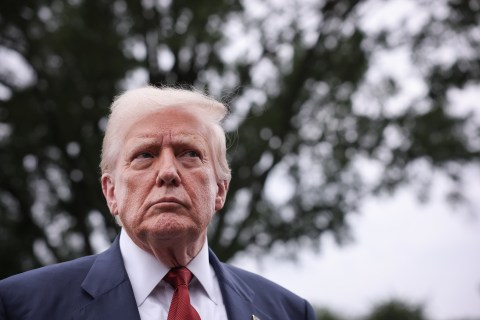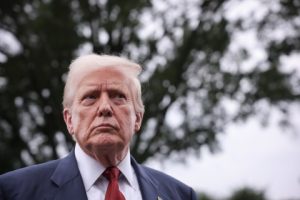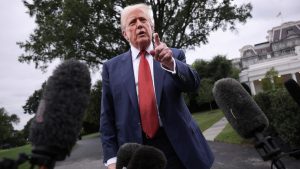BUSINESS
Understanding Trump’s $15,000 Visa Bond Policy: What It Means for Travelers and How to Navigate It

What is Trump’s $15,000 Visa Bonds Programme – and Who Does it Affect?
Understanding the Visa Bond Programme
A visa bond is a financial guarantee that a foreign national must pay before entering a country. If the traveler violates the terms of their visa, particularly by overstaying, the bond is forfeited. If the visitor complies, the bond is refunded. This system is rarely used worldwide and is typically considered a last resort to deter visa abuse.

The United States State Department introduced a 12-month pilot programme that went into effect on August 20. It applies specifically to B-1 (business) and B-2 (tourism) visa applicants from certain countries.
The visa bond programme targets travelers from nations with historically high rates of visa overstays. As per official reports, approximately 40 percent of undocumented migrants in the US are individuals who entered legally but failed to leave upon visa expiration.
Why the Policy Was Introduced
The initiative is part of the Trump administration’s broader effort to enforce stricter immigration controls and reduce the number of undocumented immigrants entering and staying in the United States.
The US Department of Homeland Security (DHS) and the State Department believe the bond system will act as a deterrent for overstaying and help authorities track individuals who may otherwise vanish after entering the country legally.
According to the Federal Register, the programme is expected to impact about 2,000 visa applicants during its pilot phase. If the average bond posted is $10,000, that equates to a total of approximately $20 million in bonds being collected.

Which Countries Are Affected?
Currently, the State Department has named Zambia and Malawi as the first countries to fall under the visa bond programme. However, officials have indicated that more countries will be added based on specific criteria.
Countries are evaluated for inclusion based on:
- High visa overstay rates.
- Deficient screening or vetting systems.
- Operation of Citizenship by Investment (CBI) programmes.
CBI programmes essentially allow individuals to purchase citizenship without residency. Nations such as St. Lucia, Antigua and Barbuda, Jordan, Austria, and Turkiye fall into this category and could be affected in future phases of the programme.
Countries With High Visa Overstay Rates
The DHS Overstay Report for 2023 identifies countries with the highest number of visa overstays among B-1 and B-2 visa holders. These include:
- Haiti
- Yemen
- Myanmar
- Laos
- Eritrea
- Chad
- Several African nations
Most of these countries were also previously included in Trump’s 2017-2020 travel ban targeting predominantly Muslim and African nations.
How Will the Visa Bond Be Applied?
The amount of the visa bond will be determined by consular officers during the visa application process. Bond values can be set at $5,000, $10,000, or $15,000, depending on the applicant’s perceived risk of overstaying.
Factors that consular officers will consider include:
- Applicant’s travel purpose
- Employment status
- Income level
- Educational background
- Immigration history
Waivers may be granted in certain circumstances, such as humanitarian emergencies or for individuals traveling on behalf of the US government.
What Happens to the Bond?
If the visitor adheres to the terms of the visa and departs the United States within the authorized timeframe, the bond will be refunded in full. However, the refund process may take several weeks or months and could involve bureaucratic delays.
If the visitor overstays, the bond is forfeited, and they may be subject to deportation, visa bans, or legal penalties for future applications.
Legal and Political Backlash
Critics of the visa bond programme have labeled it discriminatory and ineffective. Immigration attorneys, civil liberties groups, and international organizations argue that the policy unfairly targets developing nations and imposes an unreasonable financial burden on law-abiding travelers.
ACLU (American Civil Liberties Union) and other rights advocates argue that the policy creates a “wealth test” for travel to the US, disproportionately affecting poor and middle-class applicants who may already struggle to afford visa fees.
Some argue that this programme could hurt diplomatic relations, tourism, and international business, as it signals hostility to foreign visitors and investors.

Has This Been Done Before?
Yes. Trump’s administration originally introduced the visa bond concept in 2020, but the programme was never fully implemented due to the global travel freeze during the COVID-19 pandemic. The State Department now argues that there is a lack of substantive data from that pilot to draw concrete conclusions, which is why they’re reintroducing it.
Historically, the US discouraged consular officers from demanding visa bonds because the process was complex, difficult to enforce, and may create negative public perception. Despite this, the administration believes that the new pilot could provide vital data for future implementation.
Similar attempts in other countries have failed. The UK proposed a similar scheme in 2013 but dropped it after public backlash. New Zealand also experimented with bonds in the past but has since abandoned the idea.
Why Focus on Visa Overstays?
Unlike migrants who cross borders illegally, visa overstayers enter the country legally with valid documentation but fail to exit before their visa expires. The Migrant Policy Institute estimates that about 42% of undocumented migrants in the US are visa overstayers.
This statistic has remained relatively consistent for over two decades. A 2002 report by the now-defunct Immigration and Naturalization Service (INS) put the figure at 41%. More recent research by the Center for Migration Studies cited similar estimates in 2024.
These individuals often blend into society, making enforcement more difficult. As such, the visa bond programme is designed to discourage potential overstayers at the point of entry.
How Are Visa Overstays Tracked?
Tracking visa overstays has been a challenge for decades. While US Customs and Border Protection (CBP) collects biometric data at entry points, departure tracking is far less effective. According to Pew Research Center demographer Jeffrey Passel, the current data collection does not adequately distinguish between entry and exit modes.
This makes it hard to determine who has left the country, especially in cases where individuals depart by land through neighboring countries like Mexico or Canada.
Exemptions and Limitations
The programme does not apply to:
- Citizens of Mexico and Canada
- Participants of the US Visa Waiver Program (VWP)
The VWP allows citizens from over 40 approved countries, including the UK, Germany, Japan, and Australia, to enter the US for up to 90 days without a visa.
This has raised concerns of unequal treatment, as the bond programme largely targets countries from Africa, the Caribbean, and parts of Asia with limited access to visa-free travel.
Economic Implications
The economic impact of this policy could be significant. The tourism industry, already strained by pandemic-related losses, may see fewer travelers from targeted countries. Business relations with emerging markets may also suffer, particularly for Nigerian, Malawian, and Zambian professionals who regularly travel to the US for conferences, trade events, or education.
Many fear that the policy will be viewed as an indirect travel ban, one that prioritizes wealthier travelers and discriminates against applicants based on nationality and economic status.
Conclusion
The Trump-era visa bond programme, now revived and expanded, is stirring global debate. While the US government insists it’s a tool to enforce visa compliance and strengthen immigration control, many view it as an overly harsh, discriminatory policy that punishes innocent travelers and strains diplomatic relations.
As it unfolds, the programme’s success will likely depend on how it is implemented, monitored, and whether it achieves its goal of reducing visa overstays without causing undue hardship to legitimate travelers.
For now, travelers from high-risk nations are advised to review updated visa requirements carefully and consult US embassies before planning any trip to the United States.

